The grand Vijaya Vittala temple is the most extravagant architectural showpiece of Hampi. No amount of words can explain its architecture and unmatched craftsmanship. The temple is dedicated to Vittala, a form of Krishna.
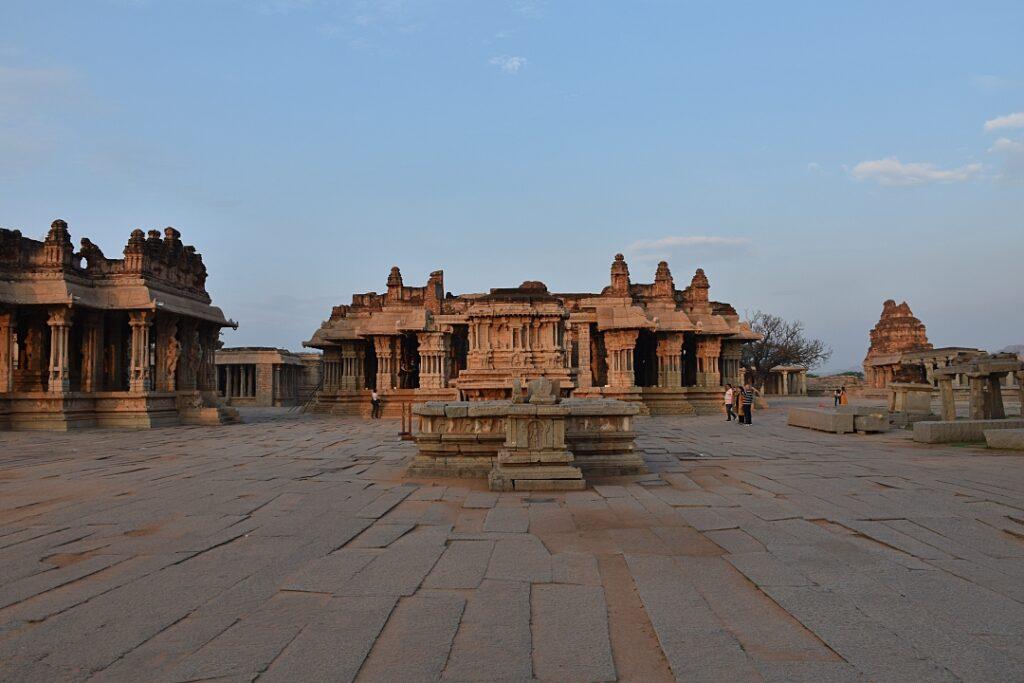
The temple opens to the east, has a square plan and features an entrance gopura with two side gopuras. The steps on the eastern side of the temple are decorated with elephant sculptures.
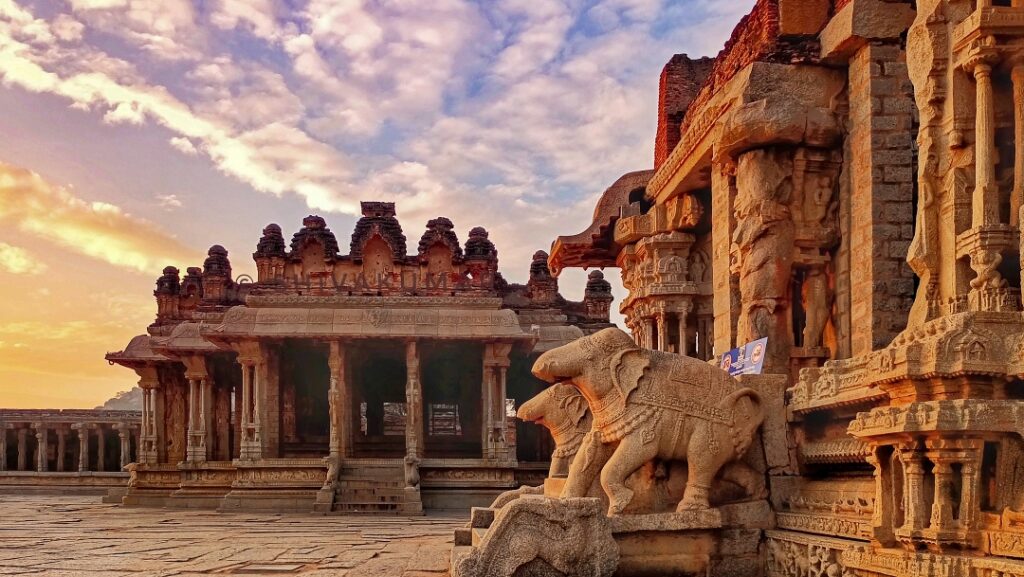
There are forty pillars lining the façade of the temple. Each of these pillars is 10 feet tall.
The Vijaya Vittala temple has four open halls. The southern hall is dominated by pillars with the sculptures of Yalis, the mythical creatures that are part lion, part elephant, and part horse. The capitals of each of these pillars branch into heavily ornate projections terminating with lotus buds.
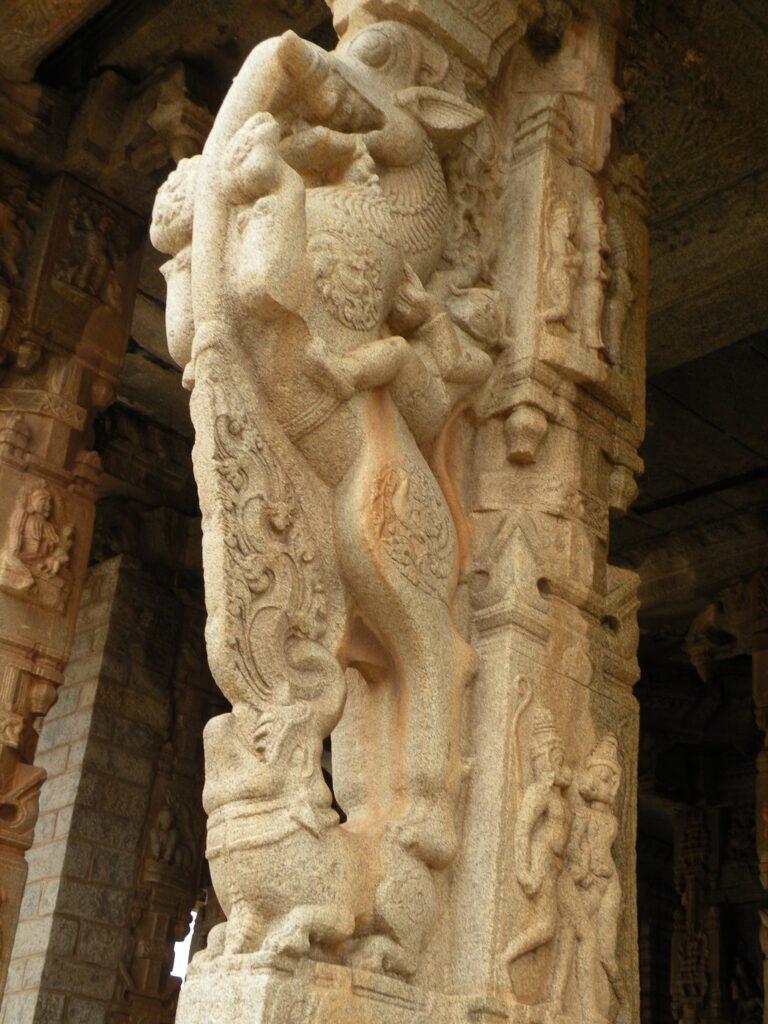
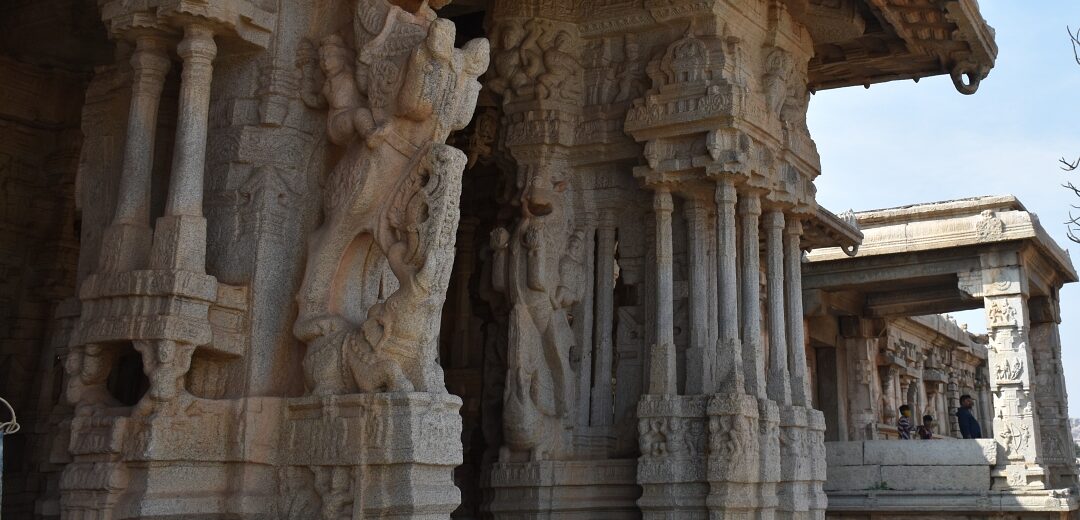
The northern hall is surrounded by a series of pillars with the Narasimha (the man-lion avatar of Vishnu) themes. The most notable ones are that of Narasimha slaying Hiranyakashipu on his lap.
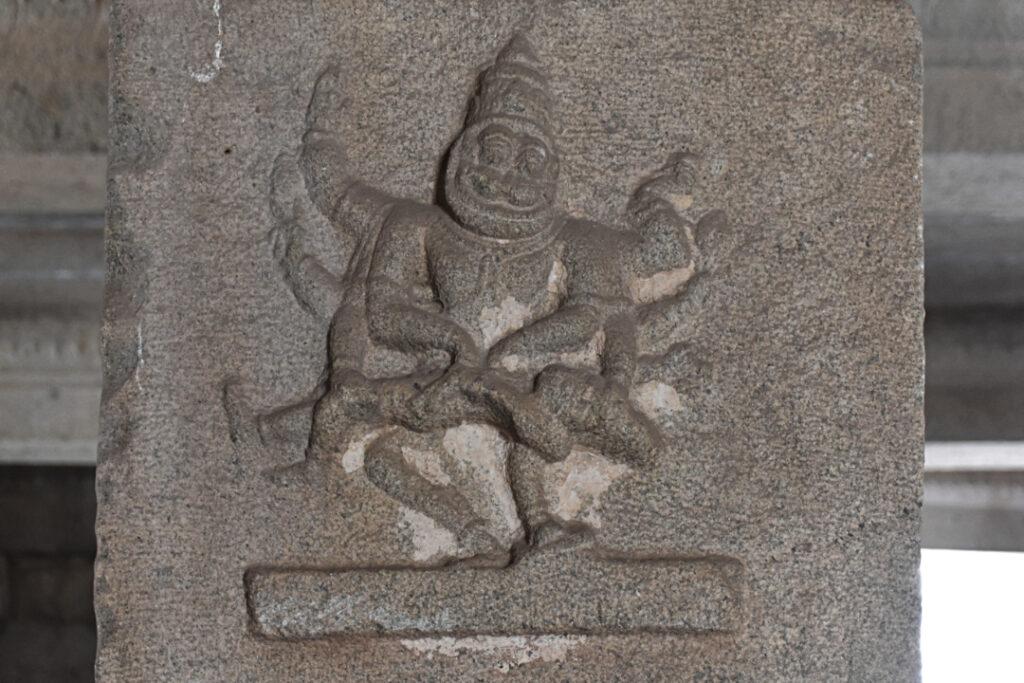
To the west is a closed hall with two porches on either side. Further ahead is the garbha griha (sanctum). The inner sanctum doesn’t contain any idol. The Vittala statue was moved from here to Vittala temple in Pandharpur, Maharashtra. The sanctum has a shikhara/gopura (tower).
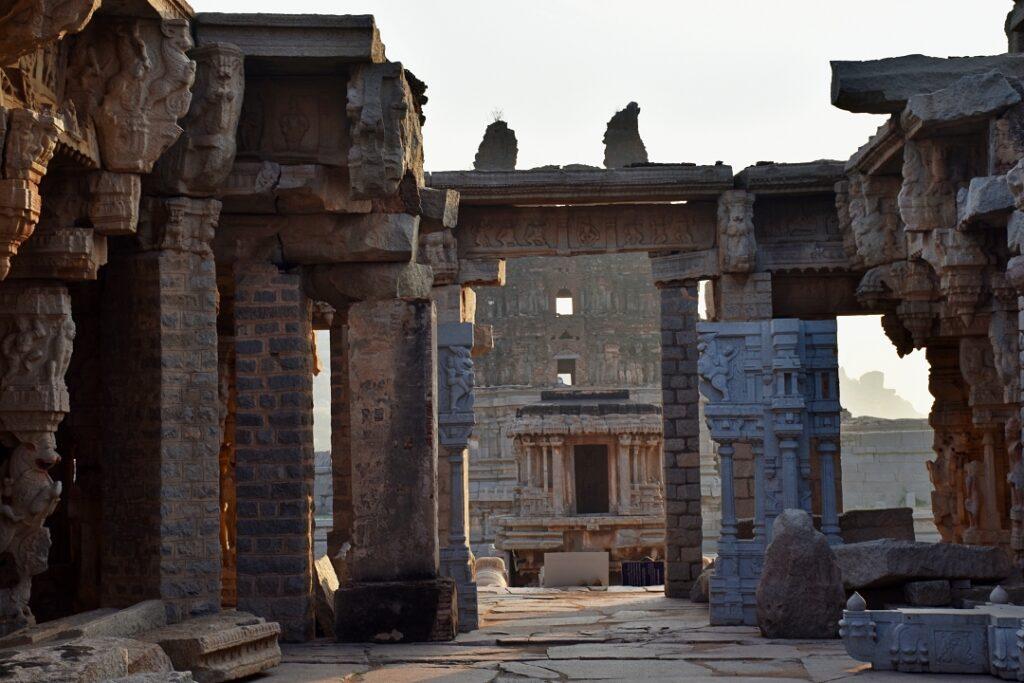
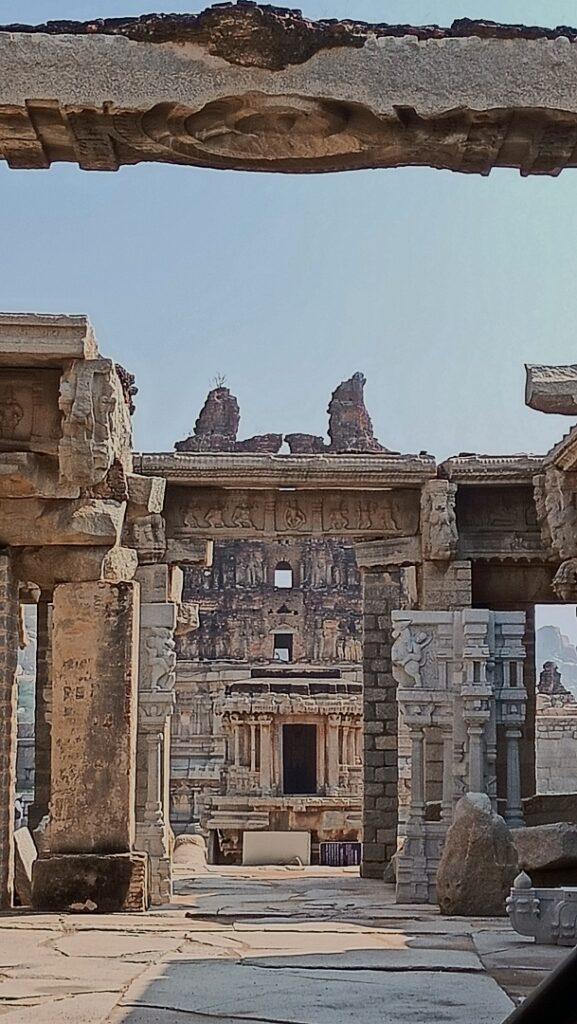
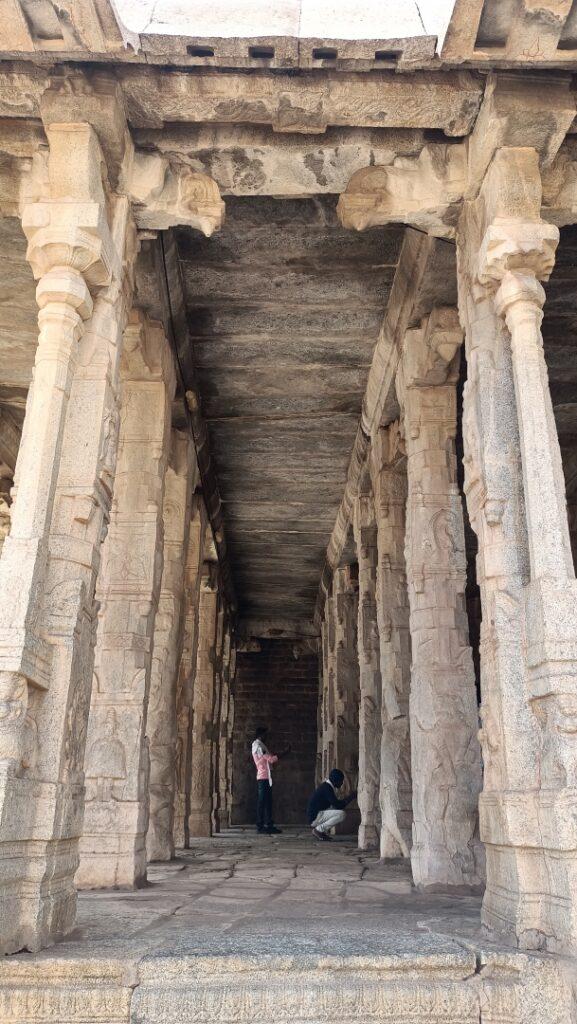
The eastern hall, called the musician’s hall, is notable for sculptures of musicians on the pillars. Each pillar in this hall is sculptured with musicians, drummers, and dancers.
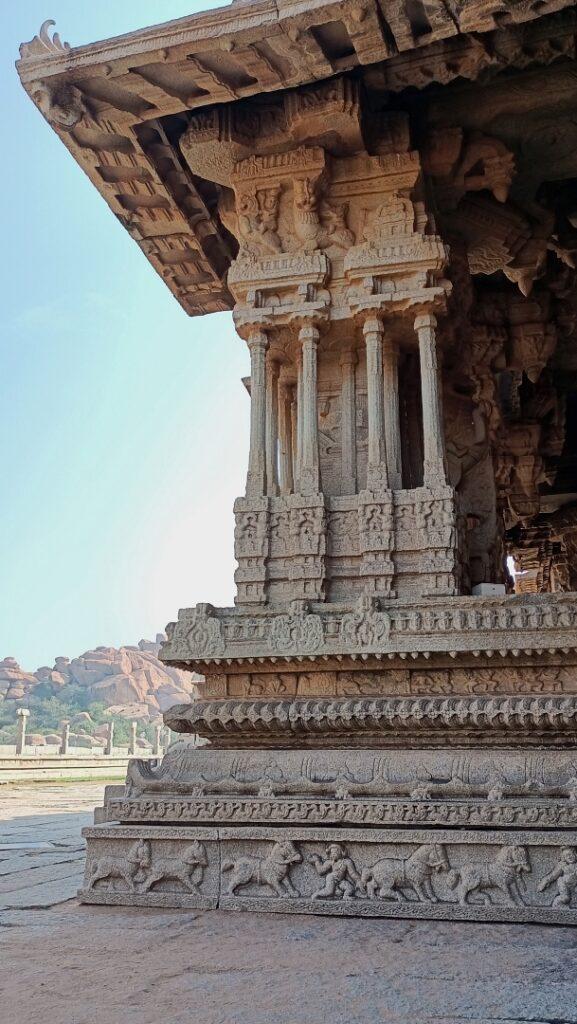
The ceiling of the halls has a lotus-like carving at the center. It is believed that the lotus pattern is nothing but the cymantic pattern, the visual pattern created by sound.
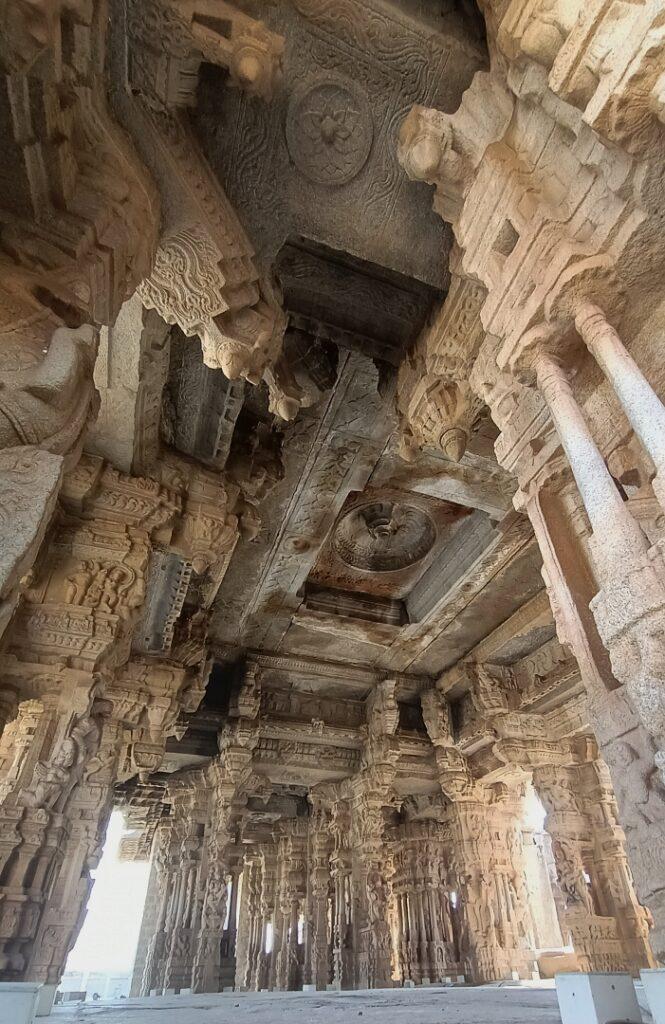
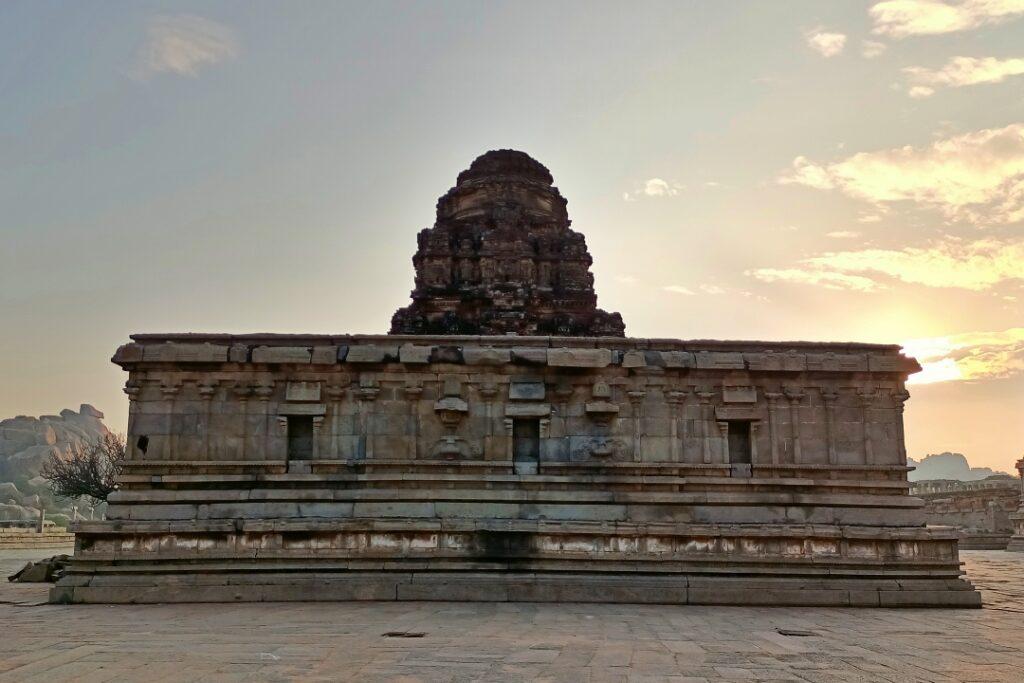
The ranga mantapa or maha mantapa of the Vijaya Vittala temple has intricately carved giant monolithic pillars. Each pillar is 10 feet high and made of solid granite. These 56 pillars are popularly called as the musical pillars or SaReGaMa pillars.
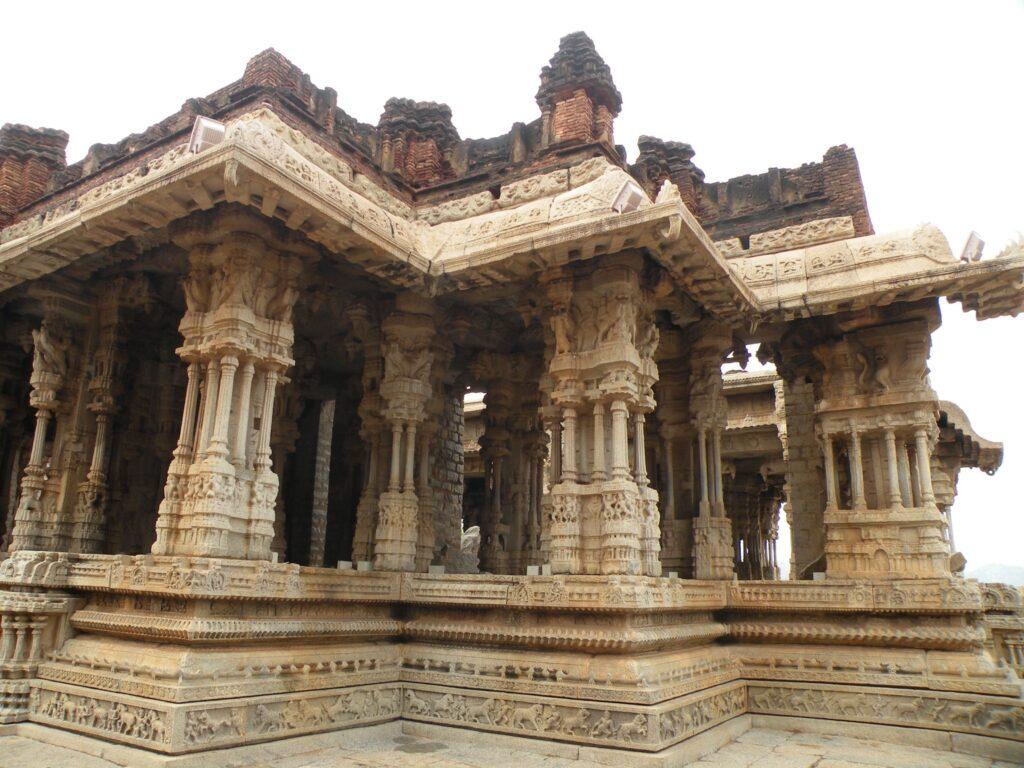
The pillars contain sculptures of musicians playing mridanga and tabla (drums), tala (cymbal), among others. You can also see sculptures of dancers on these pillars.
Seven thin pillars encircle the main core of each of these pillars.
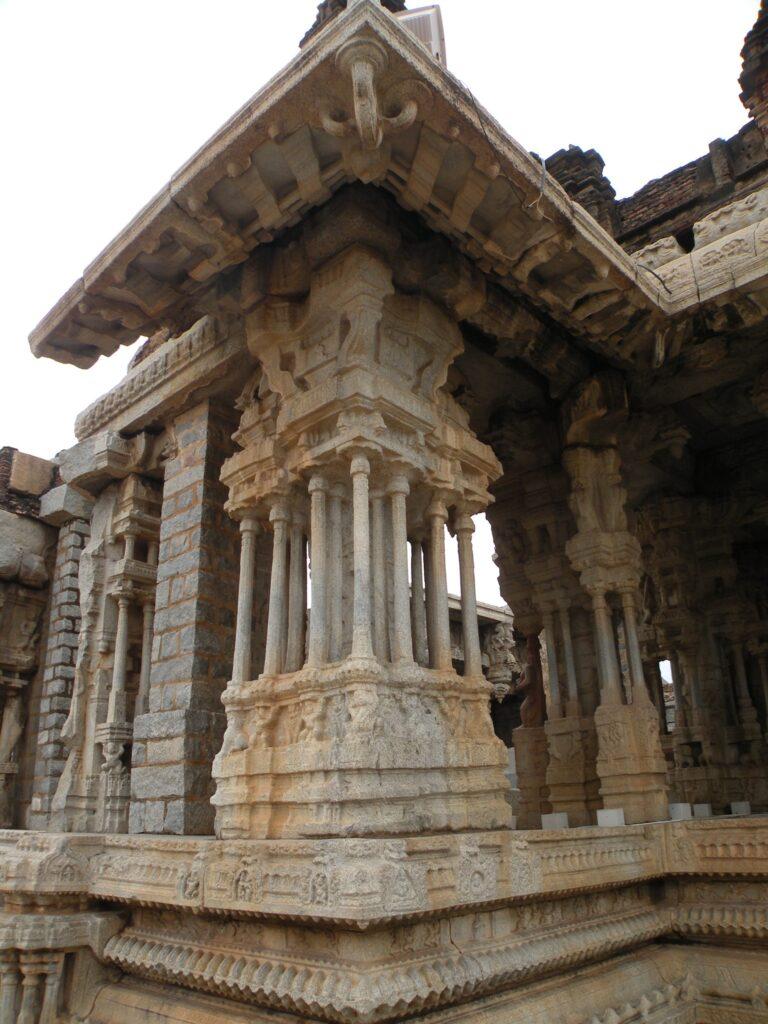
When you tap gently with your thumb or a piece of wood, these thin pillars emit a melodious sound! Different musical notes can be heard. Each note from these pillars produce different sounds, which also change as the string, percussion, or wind instrument being played. Tapping on the stone pillars is not allowed now to avoid damage to the pillars. The below video was recorded during our visit in 2012.
This temple also has an element that forms the characteristic Vijayanagara style of architecture. You can see a hole or a hook-like structure carved at the corners of ranga mantapa. This hook had a chain carved out of stone (not present now). You can see similar structures at the Vidyashankara temple in Sringeri and the Varadaraja Perumal temple in Kanchipuram. These temples were renovated by the kings of Vijayanagara empire.
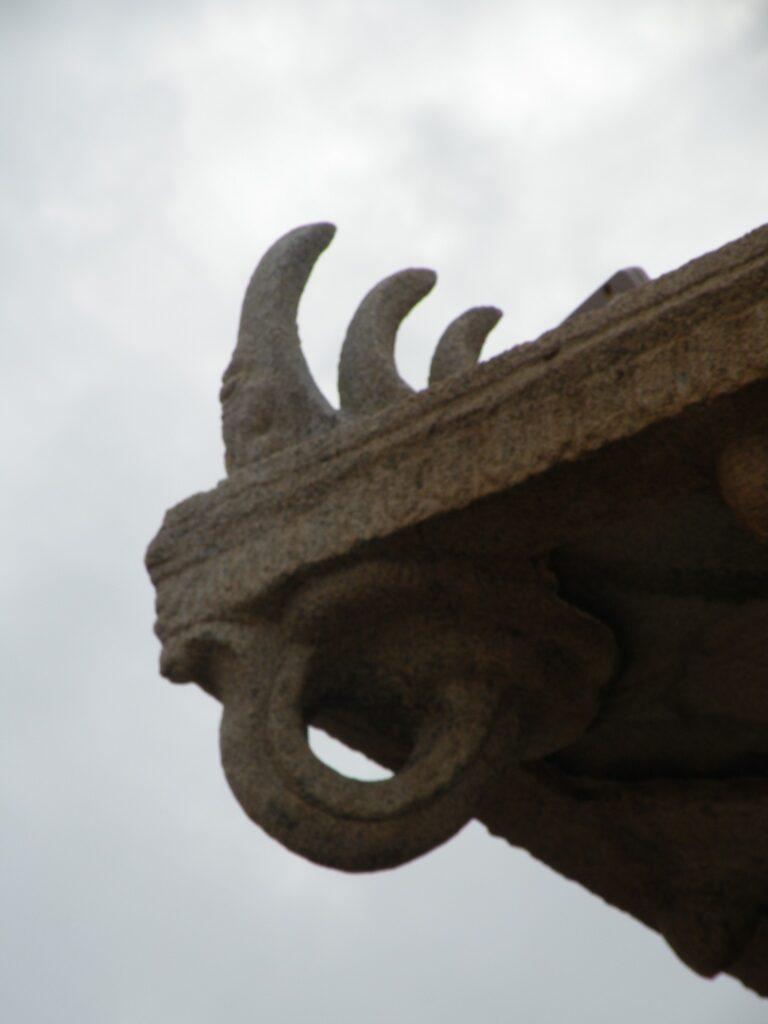
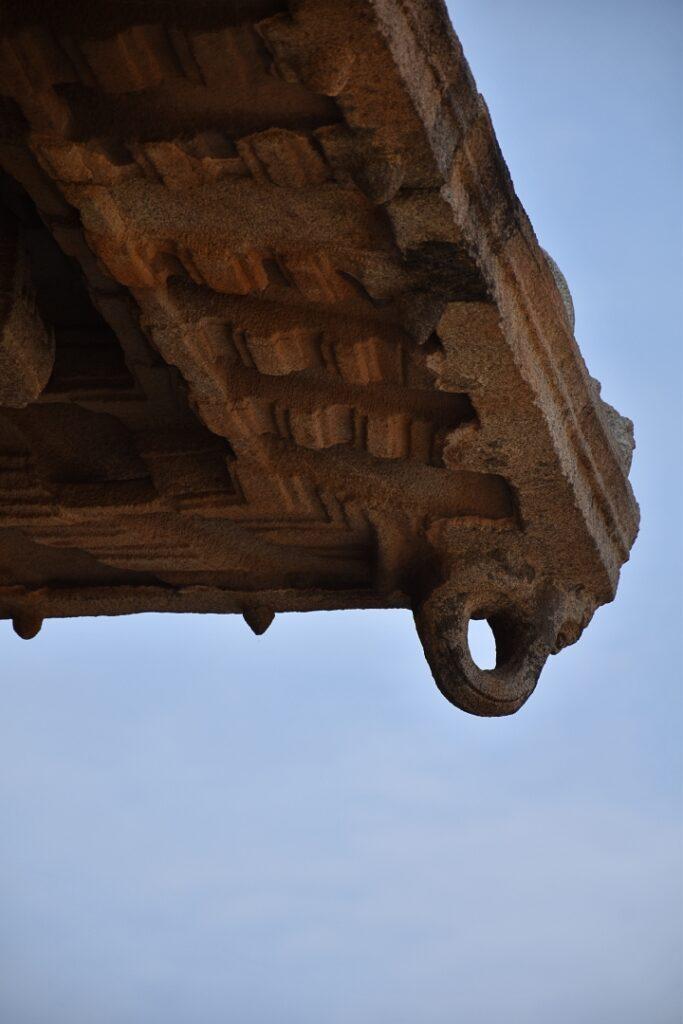
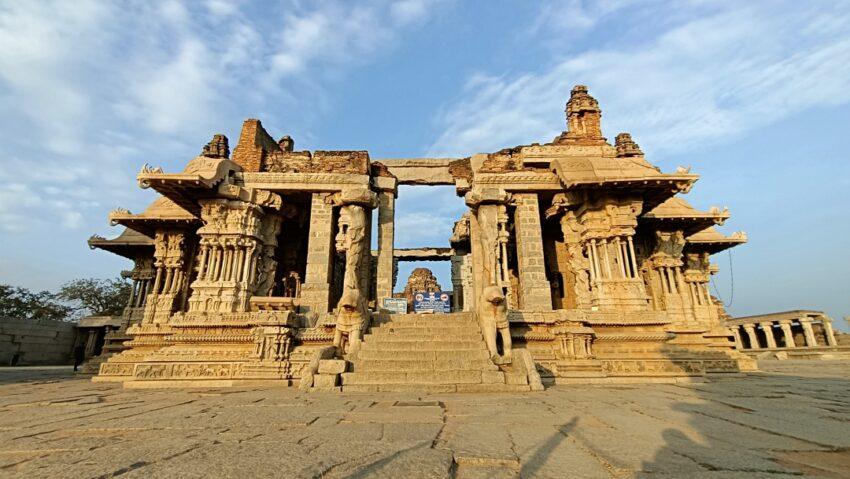
1 thought on “The grand Vijaya Vittala temple”